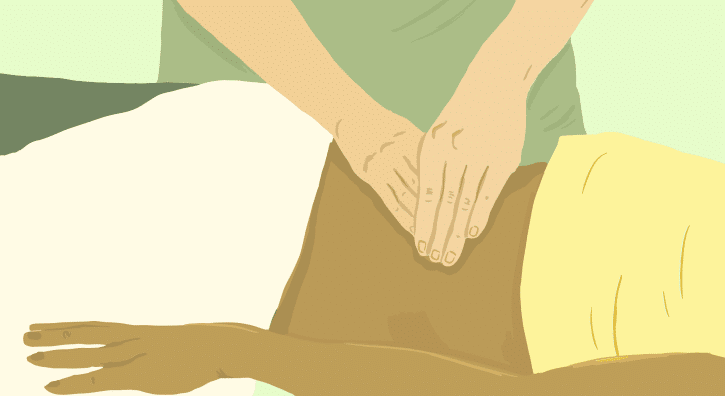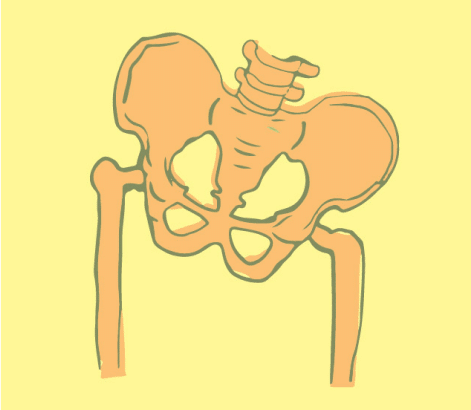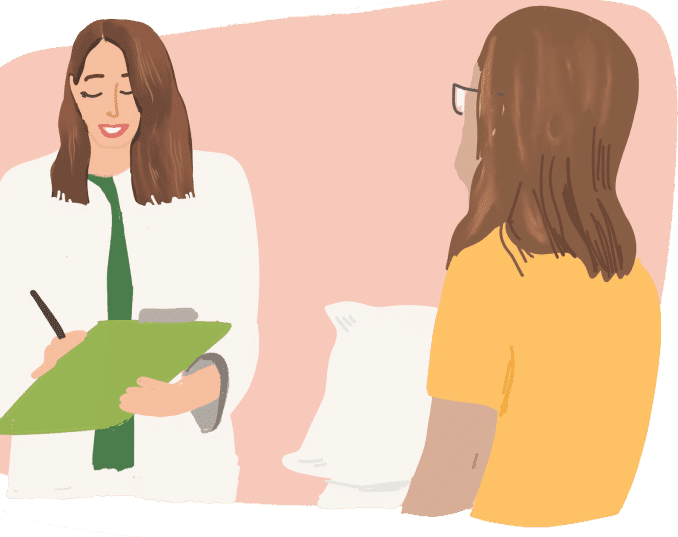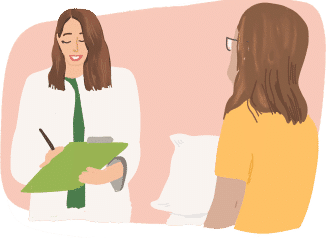

Issues such as low libido, difficulties with sexual performance, pain during intercourse, or problems reaching climax may all be signs of sexual dysfunction. These challenges can often be traced back to the pelvic floor—an area of the body not typically associated with intimacy but critical to sexual function. In men, strong and responsive pelvic floor muscles help achieve and sustain erections. In both men and women, these muscles contract rapidly during orgasm, amplifying physical pleasure. When these muscles are compromised—either too tight, weak, or uncoordinated—pain, numbness, or loss of sensation may occur, overshadowing what should be a pleasurable experience. Fortunately, pelvic floor physical and occupational therapy is a research-supported treatment that can retrain these muscles and reduce or eliminate symptoms, allowing for a more fulfilling and comfortable intimate life.
The Facts
- One out of every three women of reproductive age is likely to report pain during sex at least once in her lifetime.
- Between 15% and 72% of men younger than 40 are believed to face some form of erectile dysfunction, highlighting how common the issue can be even at a younger age.
- Men in the 40 to 70 age group experience erectile difficulties at a rate of approximately 52%, typically categorized as mild to moderate in severity.
- After undergoing prostate removal surgery, up to four out of five men deal with noticeable changes in their sexual function, especially with erections.
- A significant 60% of menopausal women choose not to talk about painful sex with their physicians, primarily due to personal embarrassment or discomfort.
- Certain medications, including hormonal contraceptives and acne prescriptions, are known to contribute to vulvar pain and diminished natural lubrication.
- Postpartum women can experience painful sex for as long as 18 months after delivery, with nearly two-thirds affected.
Issues such as low libido, difficulties with sexual performance, pain during intercourse, or problems reaching climax may all be signs of sexual dysfunction. These challenges can often be traced back to the pelvic floor—an area of the body not typically associated with intimacy but critical to sexual function. In men, strong and responsive pelvic floor muscles help achieve and sustain erections. In both men and women, these muscles contract rapidly during orgasm, amplifying physical pleasure. When these muscles are compromised—either too tight, weak, or uncoordinated—pain, numbness, or loss of sensation may occur, overshadowing what should be a pleasurable experience. Fortunately, pelvic floor physical and occupational therapy is a research-supported treatment that can retrain these muscles and reduce or eliminate symptoms, allowing for a more fulfilling and comfortable intimate life.
The Facts
- One out of every three women of reproductive age is likely to report pain during sex at least once in her lifetime.
- Between 15% and 72% of men younger than 40 are believed to face some form of erectile dysfunction, highlighting how common the issue can be even at a younger age.
- Men in the 40 to 70 age group experience erectile difficulties at a rate of approximately 52%, typically categorized as mild to moderate in severity.
- After undergoing prostate removal surgery, up to four out of five men deal with noticeable changes in their sexual function, especially with erections.
- A significant 60% of menopausal women choose not to talk about painful sex with their physicians, primarily due to personal embarrassment or discomfort.
- Certain medications, including hormonal contraceptives and acne prescriptions, are known to contribute to vulvar pain and diminished natural lubrication.
- Postpartum women can experience painful sex for as long as 18 months after delivery, with nearly two-thirds affected.
Symptoms
*Sexual Dysfunction in people with a penis
- Trouble initiating or sustaining an erection, reduced firmness, or premature climax are commonly reported symptoms linked to erectile dysfunction.
- Others may notice their ejaculation lacks the usual pressure or propulsion, signaling decreased ejaculatory force.
- Urinary leakage that occurs during climax—referred to in medical terms as climacturia—can also be a significant indicator.
- Pain following ejaculation can arise in multiple areas, including along the shaft of the penis, within the scrotum, or the perineal region.
- Discoloration of the skin across the genitals, especially in the penis, scrotum, or perineum, may also be a visible warning sign.
Postpartum Sexual Dysfunction
- Breastfeeding-induced hormonal imbalances can reduce vaginal lubrication, making intimacy uncomfortable
- Pain around the vaginal opening or perineum, frequently tied to childbirth trauma like tearing or surgical incisions
- Reduced ability to experience orgasm, or the complete absence of climax during sexual activity
- Urinary incontinence that occurs during intercourse or at the peak of orgasm
- Painful intercourse that persists weeks or months after delivery, hindering sexual confidence
*Sexual Dysfunction in people with vulvas/vaginas
- Noticeable reduction in vaginal wetness, or difficulty becoming naturally lubricated during sexual arousal
- Painful sensations that accompany either the beginning of penetration, deeper entry, or the full duration of sex
- Hypersensitivity of the clitoral area leading to discomfort or pain during direct contact
- Lingering burning or soreness following sexual engagement, often worsening after activity ends
- Challenges reaching orgasm or a sense that orgasms are much weaker than in the past
- Accidental urine release during physical intimacy that may cause embarrassment or distress
Menopausal Sexual Dysfunction and Post-gynecologic cancer treatment
- Decreased estrogen levels resulting in significant vaginal dryness and lack of lubrication
- Discomfort or inability to tolerate vaginal penetration due to tissue changes or surgical side effects
- Pain experienced either during intercourse or as a lingering sensation afterward
- Weak or entirely missing orgasmic response, contributing to emotional and physical distress
Symptoms
*Sexual Dysfunction in people with a penis
- Trouble initiating or sustaining an erection, reduced firmness, or premature climax are commonly reported symptoms linked to erectile dysfunction.
- Others may notice their ejaculation lacks the usual pressure or propulsion, signaling decreased ejaculatory force.
- Urinary leakage that occurs during climax—referred to in medical terms as climacturia—can also be a significant indicator.
- Pain following ejaculation can arise in multiple areas, including along the shaft of the penis, within the scrotum, or the perineal region.
- Discoloration of the skin across the genitals, especially in the penis, scrotum, or perineum, may also be a visible warning sign.
*Sexual Dysfunction in people with vulvas/vaginas
- Noticeable reduction in vaginal wetness, or difficulty becoming naturally lubricated during sexual arousal
- Painful sensations that accompany either the beginning of penetration, deeper entry, or the full duration of sex
- Hypersensitivity of the clitoral area leading to discomfort or pain during direct contact
- Lingering burning or soreness following sexual engagement, often worsening after activity ends
- Challenges reaching orgasm or a sense that orgasms are much weaker than in the past
- Accidental urine release during physical intimacy that may cause embarrassment or distress
Postpartum Sexual Dysfunction
- Breastfeeding-induced hormonal imbalances can reduce vaginal lubrication, making intimacy uncomfortable
- Pain around the vaginal opening or perineum, frequently tied to childbirth trauma like tearing or surgical incisions
- Reduced ability to experience orgasm, or the complete absence of climax during sexual activity
- Urinary incontinence that occurs during intercourse or at the peak of orgasm
- Painful intercourse that persists weeks or months after delivery, hindering sexual confidence
Menopausal Sexual Dysfunction and Post-gynecologic cancer treatment
- Decreased estrogen levels resulting in significant vaginal dryness and lack of lubrication
- Discomfort or inability to tolerate vaginal penetration due to tissue changes or surgical side effects
- Pain experienced either during intercourse or as a lingering sensation afterward
- Weak or entirely missing orgasmic response, contributing to emotional and physical distress
Associated Diagnoses
Diagnoses such as Endometriosis, Vulvodynia, Interstitial Cystitis/Painful Bladder Syndrome, Pudendal Neuralgia, Chronic Pelvic Pain Syndrome/Male Pelvic Pain, Lichen Sclerosus, Lichen Planus, Pelvic Floor Dysfunction, post-prostatectomy complications, and Genitourinary Syndrome of Menopause are all associated with sexual dysfunction and pelvic pain.

Associated Diagnoses
Diagnoses such as Endometriosis, Vulvodynia, Interstitial Cystitis/Painful Bladder Syndrome, Pudendal Neuralgia, Chronic Pelvic Pain Syndrome/Male Pelvic Pain, Lichen Sclerosus, Lichen Planus, Pelvic Floor Dysfunction, post-prostatectomy complications, and Genitourinary Syndrome of Menopause are all associated with sexual dysfunction and pelvic pain.


Causes of Sexual Dysfunction
- Pelvic pain syndromes associated with pelvic floor dysfunction (above)
- Childbirth
- Medications
- Obesity
- Cardiovascular disease
- Menopause
- Jelqing
- Genital mutilation, genital cutting
- Surgically-induced
- Pelvic Floor Reconstruction
- Prostatectomy
- Gender affirming surgery
- Episiotomy
- Vestibulectomy
- Pudendal Nerve Decompression
- Mesh excision
Causes of Sexual Dysfunction
- Pelvic pain syndromes associated with pelvic floor dysfunction (above)
- Childbirth
- Medications
- Obesity
- Cardiovascular disease
- Menopause
- Jelqing
- Genital mutilation, genital cutting
- Surgically-induced
- Pelvic Floor Reconstruction
- Prostatectomy
- Gender affirming surgery
- Episiotomy
- Vestibulectomy
- Pudendal Nerve Decompression
- Mesh excision

Diagnostic Challenges
Despite how vital it is to overall quality of life, sexual health is a topic often left unspoken in clinical appointments. Many physicians find the subject difficult to approach, while patients, in turn, may feel too embarrassed or afraid of negative reactions to bring it up. This mutual discomfort creates a harmful silence—particularly for LGBTQ+ individuals, who already encounter higher levels of bias and exclusion in healthcare. Too often, their specific needs are left unmet. At PHRC, we actively challenge that norm by providing a warm, welcoming environment where no concern is too personal or off-limits. Sexual health has evolved into its own recognized branch of medical care, requiring the same attention and respect as any other area of health. We understand that optimal sexual well-being isn’t just about anatomy—it’s about the whole person. That’s why our care model integrates physical and occupational therapy, mental health support, and medical expertise to help patients reclaim confidence, comfort, and connection.
Diagnostic Challenges
Despite how vital it is to overall quality of life, sexual health is a topic often left unspoken in clinical appointments. Many physicians find the subject difficult to approach, while patients, in turn, may feel too embarrassed or afraid of negative reactions to bring it up. This mutual discomfort creates a harmful silence—particularly for LGBTQ+ individuals, who already encounter higher levels of bias and exclusion in healthcare. Too often, their specific needs are left unmet. At PHRC, we actively challenge that norm by providing a warm, welcoming environment where no concern is too personal or off-limits. Sexual health has evolved into its own recognized branch of medical care, requiring the same attention and respect as any other area of health. We understand that optimal sexual well-being isn’t just about anatomy—it’s about the whole person. That’s why our care model integrates physical and occupational therapy, mental health support, and medical expertise to help patients reclaim confidence, comfort, and connection.
Treatment:
How We Can Help You

For individuals in Culver City dealing with sexual dysfunction, it’s worth considering whether pelvic floor dysfunction may be playing a role. A targeted evaluation with a pelvic floor physical and occupational therapist can offer valuable insight and pave the way toward relief. Your initial appointment is more than just a physical exam—it begins with a deep dive into your medical background, previous conditions, treatment attempts, and what outcomes you’ve experienced. We know from working with countless Culver City residents that these symptoms can be incredibly frustrating, especially when providers don’t seem to listen. At our practice, we prioritize validation and education. During the physical exam, your therapist will assess how your pelvic floor muscles are functioning, examine nerve activity, joint health, and tissue integrity, and evaluate how your body moves overall. Based on these findings, you’ll receive a clear explanation of what might be contributing to your symptoms and a custom plan that includes weekly or biweekly sessions over approximately 12 weeks. Your treatment will be supported by exercises to perform at home, and we’ll coordinate with any other members of your healthcare team to ensure aligned care. Our goal is to support your healing process with compassion and clarity—so you can move forward in Culver City and live with greater ease and confidence.

Treatment:
How We Can Help You
For individuals in Culver City dealing with sexual dysfunction, it’s worth considering whether pelvic floor dysfunction may be playing a role. A targeted evaluation with a pelvic floor physical and occupational therapist can offer valuable insight and pave the way toward relief. Your initial appointment is more than just a physical exam—it begins with a deep dive into your medical background, previous conditions, treatment attempts, and what outcomes you’ve experienced. We know from working with countless Culver City residents that these symptoms can be incredibly frustrating, especially when providers don’t seem to listen. At our practice, we prioritize validation and education. During the physical exam, your therapist will assess how your pelvic floor muscles are functioning, examine nerve activity, joint health, and tissue integrity, and evaluate how your body moves overall. Based on these findings, you’ll receive a clear explanation of what might be contributing to your symptoms and a custom plan that includes weekly or biweekly sessions over approximately 12 weeks. Your treatment will be supported by exercises to perform at home, and we’ll coordinate with any other members of your healthcare team to ensure aligned care. Our goal is to support your healing process with compassion and clarity—so you can move forward in Culver City and live with greater ease and confidence.
How Can We Help You?
Please use the form below to send us any questions or comments. You must include your e-mail address in order for us to send a response. Please be assured that all of your information will be kept confidential.

Join The Newsletter. Win a copy of our book, “Pelvic Pain Explained!”
We love getting to know our website visitors. Please tell us a little bit about yourself and get the latest info via PHRC e-newsletter!
*Subscribers automatically eligible to win our book, “Pelvic Pain Explained.”
Pelvic Pain Explained is more than a medical overview—it’s a nuanced narrative that traces the lived experience of those suffering from pelvic pain. The book paints a clear picture of the difficult path many patients must walk—from the earliest signs of discomfort to the long and often disheartening search for a name, a cause, or a solution. It highlights the systemic and interpersonal challenges healthcare providers face when treating an invisible and often stigmatized condition. The text thoughtfully addresses the emotional confusion and decision fatigue that accompany the process of trying numerous treatments without clarity. In doing so, it brings to light the personal and relational strain that chronic pelvic pain inflicts, fostering empathy and understanding in a space where they’re desperately needed.


